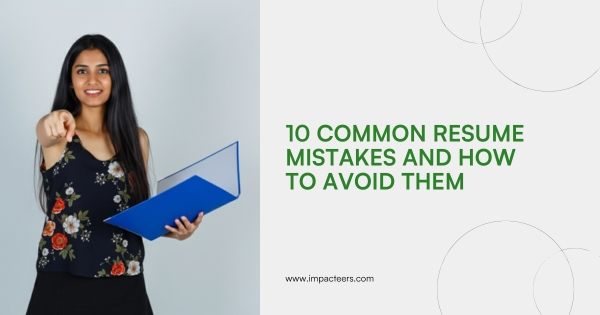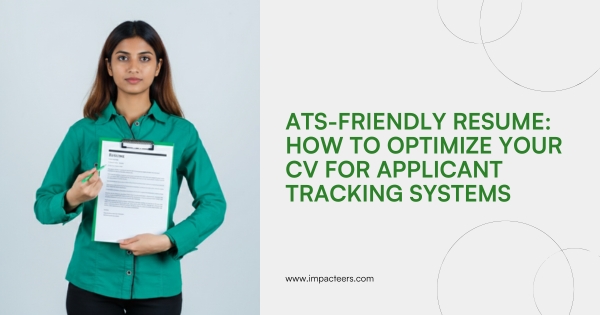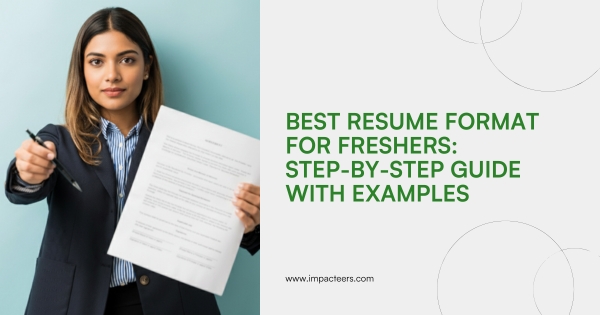When you apply for a job,Resume Mistakes becomes more than just a sheet of paper. It acts as the story of your personal brand. But many people mess up without even realizing it making mistakes on their resumes that cost them interviews. Studies show hiring managers glance at resumes for less than 7 seconds before deciding to continue or not. Even small errors could block your path to the job you want.

This guide will cover the 10 biggest resume mistakes to avoid and share strategies to write resumes that stand out. It doesn’t matter if you’re a student just starting out, or someone with experience. These tips can help you create a resume that grabs attention.
Visit Us >>> https://www.impacteers.com
Why It’s Important to Avoid Resume Mistakes
Think of a resume as a way to introduce yourself. Like you wouldn’t arrive at an interview in a shirt that’s messy or late, you shouldn’t send out a sloppy resume either. Steering clear of these typical errors can result in:
Stronger chances to pass ATS (Applicant Tracking Systems)
A better professional impression
More calls to schedule interviews
Greater confidence while job hunting
Mistake #1: Sending the Same Resume Everywhere
A common error people make is using one resume for every job. Recruiters recognize when an application feels generic.
Use these tips to fix it:
Match your resume with what the job ad asks for.
Pick out key terms mentioned in the job post.
Adjust your accomplishments so they fit the position.
Mistake #2: Overlooking Compatibility with ATS
Applicant Tracking Systems help recruiters by filtering resumes beforehand. A optimized resume might never reach a recruiter.
Here’s how to make sure your resume passes:
- Stick with common fonts like Arial, Calibri, or Times New Roman
- Skip using images or quirky layouts that might confuse the system
- Add relevant keywords in a natural way
Mistake #3: Messy Formatting and Layout
Unorganized layouts or mismatched fonts make resumes harder to read.
Keep your layout neat by:
- Choosing a simple straightforward design
- Adding clear section headers and bullet points
- Using the same spacing throughout
Mistake #4: Spelling and Grammar Issues
Typos might seem like a simple issue, but they are one of the most frequent errors on resumes. They show poor attention to detail.
To avoid this:
Proofread several times.
Try tools such as Grammarly.
Have a friend check it for you.
Mistake #5: Sharing Too Much Personal Info
Listing things like your age marital status, or religion is unnecessary in many countries. Employers care about your abilities and work background instead.
What to include instead:
Your phone number, email, and LinkedIn.
A professional overview.
Skills relevant to the job.
Mistake #6: Using Long Paragraphs Over Bullet Points
Recruiters scan resumes so big chunks of text can make them harder to follow.
Here’s how to fix it:
- Highlight achievements using bullet points
- Write short measurable sentences
- Begin each point with a strong action word
Mistake #7: Not Showing Quantifiable Achievements
Listing only tasks makes a resume dull. Employers care about results.
Make your resume better by:
- Using numbers or data like “Boosted sales by 25%”
- Showing the results of your efforts
- Proving you can solve problems
Mistake #8: Using a Silly Email Address
An email like cooldude123@gmail.com might seem fun, but it hurts your chances.
Here is a good resume tip:
Use a simple email address like firstname.lastname@email.com. Keep it professional and easy to identify.
Mistake #9: Writing a Resume That’s Too Long or Too Short
A six-page resume confuses recruiters, while a half-page one undersells what you bring to the table.
Resume advice:
To build the perfect resume:
- Freshers should aim to use one page.
- Professionals with experience should stay within two pages at most.
- Put your most recent and relevant work first.
Mistake #10: Writing a Weak Professional Summary
Make your summary stand out right away. A generic or unclear summary pushes recruiters away.
Instead, try this:
- Write two or three strong lines that show real achievements.
- connect your skills to the role you’re applying for.
- Highlight the value you can add to the company.
Extra Resume Advice for Job Hunters
Name your file in a clean and professional way like John-Doe-Resume.pdf.
Use PDF format when sending resumes unless told otherwise.
Make sure your LinkedIn profile matches what’s on your resume.
Wrapping It Up
Your resume opens the door to interviews. Dodging these mistakes could mean the difference between getting hired or ignored. Follow these tips and focus on crafting a solid resume to stand out in the job hunt.
Want to give your resume a boost? Head over to our Career Development Hub to find expert tools or contact us to get a custom resume review. Don’t let small errors keep you from reaching your career goals.
Learn More >>> https://blog.impacteers.com
About Us >>> https://www.impacteers.com
FAQs About Resume Mistakes
- What are the biggest resume mistakes people should avoid?
Typos bad formatting, and using the same generic resume for every job are some of the worst mistakes.
- How do I fix resume mistakes fast?
You can proofread , use resume tools, and adjust it to fit each job.
- Do mistakes on resumes affect ATS scans?
They do. Formatting issues or missing key terms might stop your resume from passing the scan.
- Should I put a photo on my resume?
no, in most places. Photos can create bias so add one if the job asks for it.
- What’s the most common resume mistake beginners make?
Listing responsibilities instead of accomplishments and not customizing resumes to match the job.




Post Comment